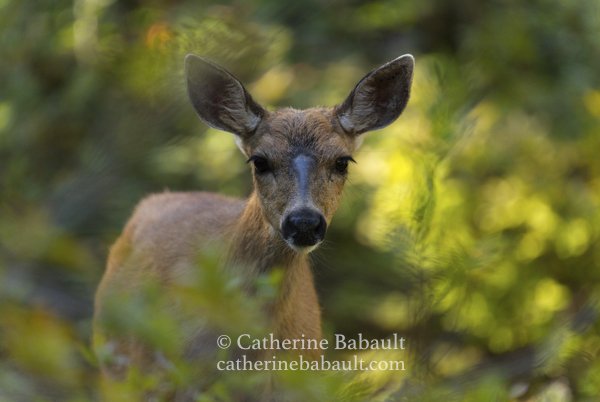A narrow depth of field isolates the subject. It makes it stand out against a blurred background because the viewer’s eye is naturally attracted by a sharp subject. For this close-up of a deer, I opted for a telephoto lens (focal length of 400 mm) and a large aperture of f/5.6. Note that a fast shutter speed also narrows the depth of field.
A wide depth of field put the subject into context. The entire picture is sharp so the viewer tends to look at the subject in relation to its surroundings. Here I wanted to show the old-growth tree stump in relation to the forest and mountains in the background. So I opted for a wide-angle lens (focal length of 70 mm) and a smaller aperture of f/11.

